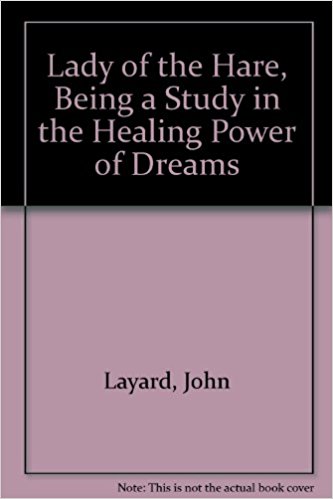

 |

|

The average rating for The lady of the hare based on 2 reviews is 4 stars.
Review # 1 was written on 2013-11-16 00:00:00 Matthew Gaston Matthew GastonThis took a long time to read, and was well worth the time invested. The first part of the book is an amazing affirmation of the power of dreams to heal what ails us when we take the time to attend them and eke out their symbolic/metaphoric and imaginative language. The second part is a fascinating and detailed look at the place the humble hare has had in the pantheon of gods across the globe, including Buddhism and the Bible. And reading it delighted me with a steady flow of tiny synchronicities. My book is festooned with pink and green sticky notes, many of them documenting those synchronicities. Even on the last day I read it! I finished it on 2016.05.27, and later that day I heard, for the first time, the promotion of the release of Alice Through the Looking Glass, and the news commentators I heard were making a steady stream of bad puns playing off of "rabbit hole." This book has the power to change your perception of dreams, the importance on other people of your own personal psychological health, and the place of the hare in human history. This is delightful read that can be nibbled on over the course of a few months. |
Review # 2 was written on 2012-05-06 00:00:00 Oscar Reyes Oscar ReyesI wouldn't really reccomend this book, in that I'm not sure of the direction it points to or the conclusion it seems to come to. However, I found it helpful because it traced a single symbol of the white rabbit through so many cultures and times, and one woman's life in particular. I also found it helpful because it explained in two hundred pages what Joseph Campbell tries to sum up in two sentences: that is how and why a mythical symbol might appear in a modern person's dream that they have no understanding or experience with. It is a specific case study of what Carl Jung writes volumes about but never gives examples of: How and why each human mind has access to a file folder of archetypal images with inherent meanings that do not change over time-- regardless of our own knowledge or experience. To me it also explains why the white rabbit from Alice in Wonderland has lead to or increased the use of idioms in everyday language. Why losing one's thought is "going down a rabbit hole" and why the image of the moon and the white rabbit are so intermixed in stories, poems, songs, and the like. If you think and study in images rather than words, this book might be helpful in connecting a group of them in an orderly historical way. |
CAN'T FIND WHAT YOU'RE LOOKING FOR? CLICK HERE!!!